![]()
![]()
![]()
Use LEFT and RIGHT arrow keys to navigate between flashcards;
Use UP and DOWN arrow keys to flip the card;
H to show hint;
A reads text to speech;
25 Cards in this Set
- Front
- Back
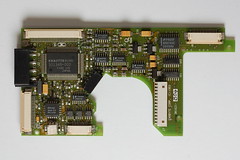
exabyte
|
(1) 2 to the 60th power (1,152,921,504,606,846,976) bytes. An exabyte is equal to 1,024 petabytes
|
|

kilobyte
|
In decimal systems, kilo stands for 1,000, but in binary systems, a kilo is 1,024 (2 to the 10th power). Technically, therefore, a kilobyte is 1,024 bytes, but it is often used loosely as a synonym for 1,000 bytes.
|
|
|
petabyte
|
It wasn't that long ago that data storage devices were measured in gigabytes and terabyte hard drives seemed exotic.
|
|
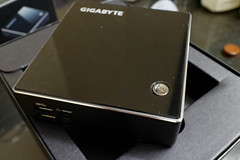
gigabyte
|
2 to the 30th power (1,073,741,824) bytes. One gigabyte is equal to 1,024 megabytes.
|
|
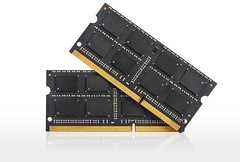
megabyte
|
(1) When used to describe data storage, 1,048,576 (2 to the 20th power) bytes. Megabyte is frequently abbreviated as M or MB
|
|
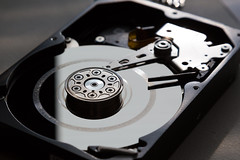
terabyte
|
2 to the 40th power (1,099,511,627,776) bytes. This is approximately 1 trillion bytes.
|
|
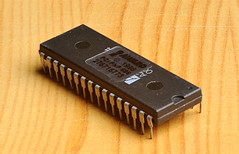
basic input/out put system
|
(bī´ōs) Acronym for basic input/output system, the built-in software that determines what a computer can do without accessing programs from a disk. On PCs, the BIOS contains all the code required to control the keyboard, display screen, disk drives, serial communications, and a number of miscellaneous functions.
|
|
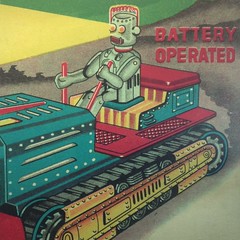
battery
|
A rechargeable battery used in portable computer devices, such as notebook computers. The most common substances used in computer battery packs are nickel cadmium (Ni cad), nickel metal hydride (NiMH), and Lithium Ion.
|
|
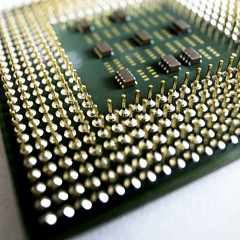
Central processing unit
|
The amount of time the CPU is actually executing instructions. During the execution of most programs, the CPU sits idle much of the time while the computer fetches data from the keyboard or disk, or sends data to an output device.
|
|

expansion card
|
A collection of wires and protocols that allows the expansion of a computer by inserting printed circuit boards (expansion boards). Traditionally, PCs have utilized an expansion bus called the ISA bus.
|
|
|
expansion card slot
|
An opening in a computer where a circuit board can be inserted to add new capabilities to the computer. Nearly all personal computers except portables contain expansion slots for adding more memory, graphics capabilities, and support for special devices.
|
|

hard drive
|
The mechanism that reads and writes data on a hard disk. Hard disk drives (HDDs) for PCs generally have seek times of about 12 milliseconds or less.
|
|
|
heat sink with cooling fan
|
A component designed to lower the temperature of an electronic device by dissipating heat into the surrounding air. All modern CPUs require a heat sink.
|
|

motherboard
|
The main circuit board of a microcomputer. The motherboard contains the connectors for attaching additional boards.
|
|
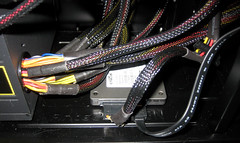
power supply
|
Also called a power supply unit or PSU, the component that supplies power to a computer. Most personal computers can be plugged into standard electrical outlets.
|
|
|
RAM
|
that allows faster access to data in the same row or page. Page-mode memory works by eliminating the need for a row address if data is located in the row previously accessed.
|
|

audio out
|
Refers to the reproduction and transmission of sound stored in a digital format. This includes CDs as well as any sound files stored on a computer.
|
|

Keyboard
|
The set of typewriter-like keys that enables you to enter data into a computer. Computer keyboards are similar to electric-typewriter keyboards but contain additional keys.
|
|

Monitor HD-15
|
Another term for display screen. The term monitor, however, usually refers to the entire box, whereas display screen can mean just the screen.
|
|

mouse
|
A device that controls the movement of the cursor or pointer on a display screen. A mouse is a small object you can roll along a hard, flat surface.
|
|

parallel
|
Refers to processes that occur simultaneously. Printers and other devices are said to be either parallel or serial.
|
|
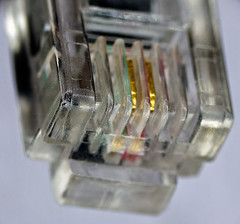
RJ-11
|
Short for Registered Jack-11, a four- or six-wire connector used primarily to connect telephone equipment in the United States. RJ-11 connectors are also used to connect some types of local-area networks (LANs), although RJ-45 connectors are more common.
|
|

RJ-45
|
Short for Registered Jack-45, an eight-wire connector used commonly to connect computers onto a local-area networks (LAN), especially Ethernets. RJ-45 connectors look similar to the ubiquitous RJ-11 connectors used for connecting telephone equipment, but they are somewhat wider.
|
|
|
serial
|
One by one. Serial data transfer refers to transmitting data one bit at a time.
|
|
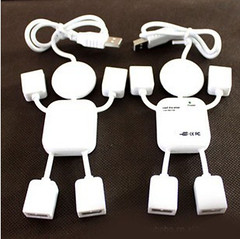
USB
|
Short for Universal Serial Bus, an external bus standard that supports data transfer rates of 12 Mbps. A single USB port can be used to connect up to 127 peripheral devices, such as mice, modems, and keyboards
|

